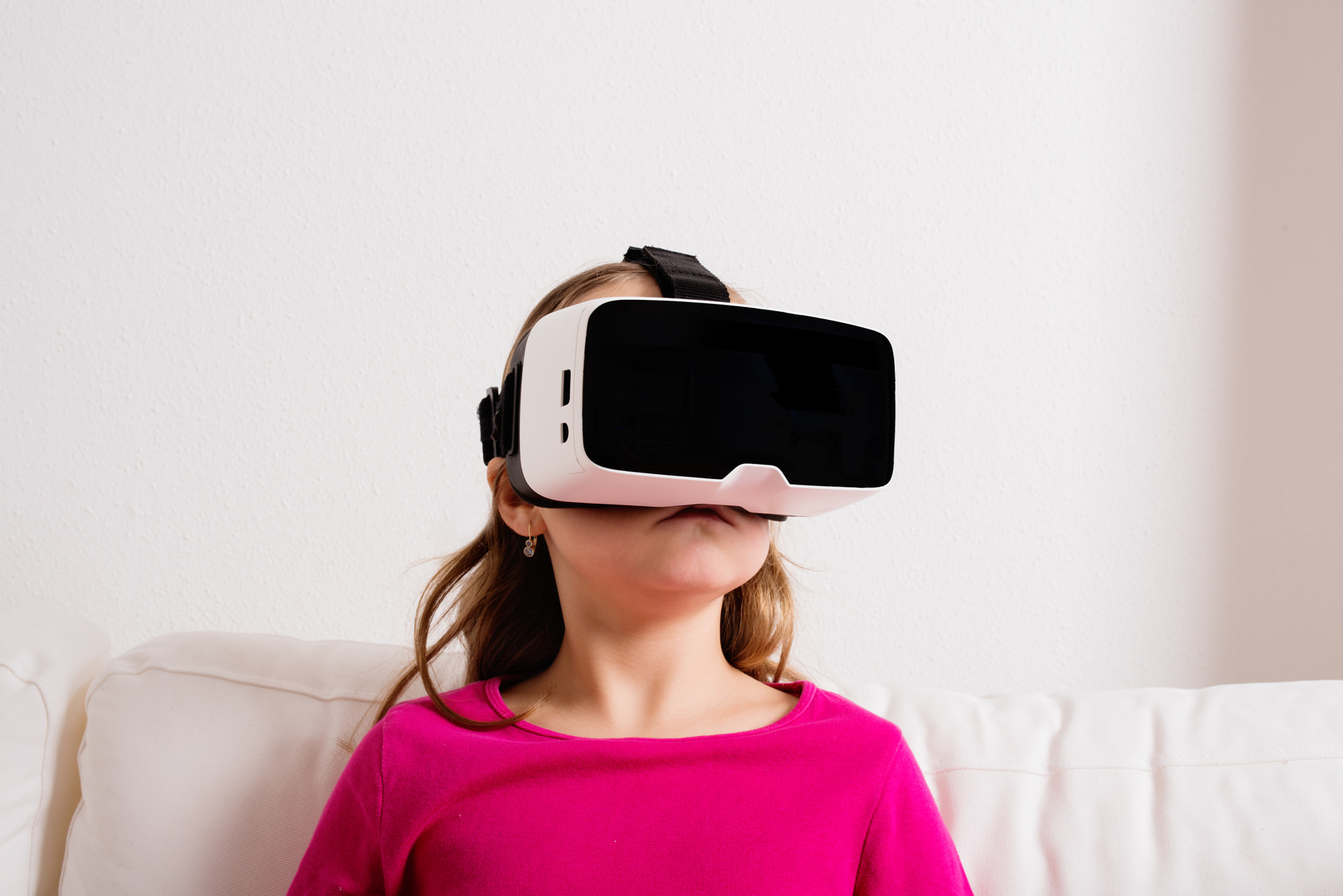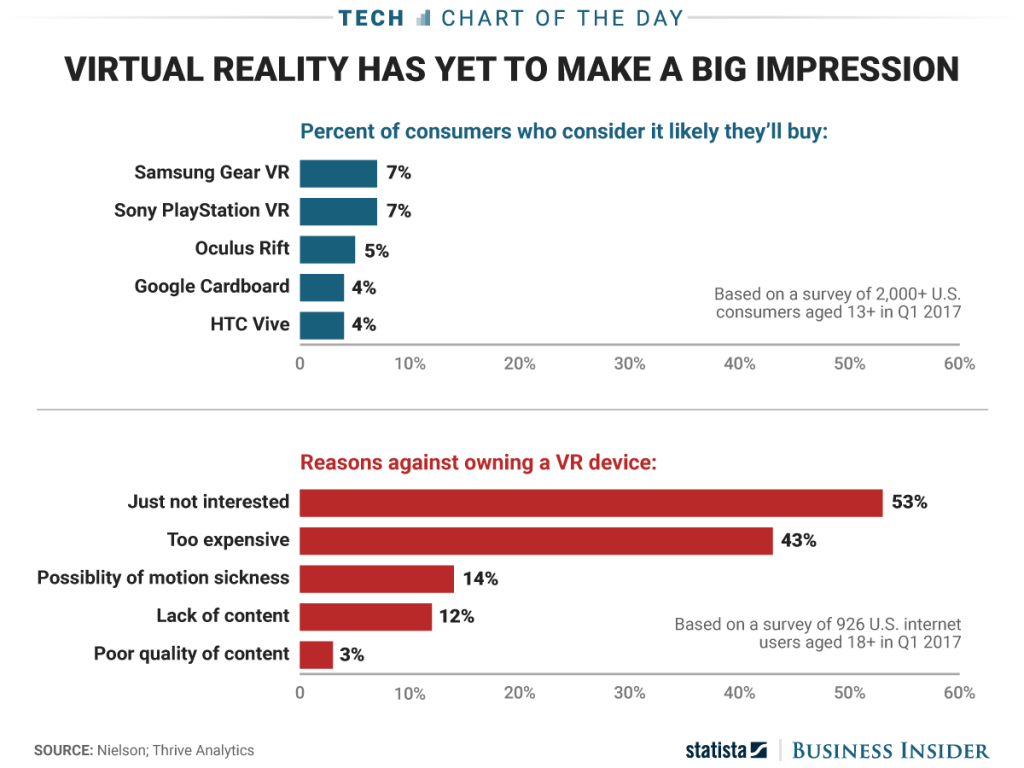Although I am a big fan of VR and more specifically, its potential for both business and consumers, my belief is that VR as an immersive experience is in its very early stages. I don’t expect VR to be significant outside of key verticals and gaming for at least five to seven years. While I do see VR-based entertainment experiences happening sooner, since Sony and other Hollywood studios hope to create VR theaters and deliver VR movies by 2018, the costs of these headsets and their need for a powerful PC of some type to drive it will keep this out of the hands of mainstream consumers for the foreseeable future.
The two charts below, which took the temperature of the consumer market in Q1 this year, pretty much confirms interest in VR today is minimal, mostly due to either lack of interest or prices of the current VR solutions.
In a recent Tech.pinions column for subscribers, I also pointed out I had some major concerns about VR that included the fact a person could get so caught up in virtual worlds, they have trouble dealing with the real world as well as the issues with eye strain, motion sickness, and anti=social behavior.
This does not mean companies working on VR will not push hard to try and get VR into the mainstream much sooner.
Google has its Daydream project, Samsung has Gear VR and both are pursuing VR by using mobile devices as their vehicle for delivering it. In that sense, mobile as a VR platform has the potential to deliver what I call “Introductory VR” to a broad audience much sooner. But the problem with a mobile smartphone approach, even with headsets like Gear VR, is this VR experience is nowhere as immersive as the one you get from PC or game console-based versions like Oculus, HTC Vive, or Sony Playstation VR. And even with Microsoft’s Hololens moving to a Goggle only solution, cost will still be a factor for any rapid uptake in this platform.
There is one caveat though. I have recently seen a VR system based on a PC platform that shows real promise. It is already in use in education but it has some real potential to bring VR to more consumers in the near future. Full disclosure: We are working with this company, zSpace.com, so I will refrain from commenting on it but check out the link to their site which will give you an idea of how VR could gain a stronger foothold in the PC space much sooner than other VR programs that use dedicated VR goggles.
What I am seeing happen in the VR, AR and mixed reality space is more of a shift to an AR focus for multiple reasons. The big one is it can be delivered on a mobile smartphone platform and be used to extend the user interface and deliver virtual objects on top of real-world objects. Pokemon Go showed consumers the idea of AR on a smartphone and has laid some important groundwork in the form of what consumer expectations are with AR apps.
Because of how Pokemon Go used the smartphone as a platform to deliver AR, all of the major smartphone platforms are moving fast to make AR one of their offering for their customers to give a richer mobile computing experience.
At Google’s recent developer conference, Google showed an updated version of their Tango AR platform for mobile as well as introducing Google Lens, which adds AR like functionality to photos and other content.
There are many signs pointing to the possibility Apple will design the next iPhone to take advantage of their own AR strategy going forward. Given Apple’s history of being a leader in any new area they concentrate on, Apple could end up being a very significant company that brings AR to the mainstream relatively fast.
The other reason AR could gain traction with consumers well before VR is that, with the right SDK and platform, software developers could start to crank out thousands of AR apps for smartphones relatively quickly. In Apple’s case, I could see them seeding five or six developers by the time the new iPhone is launched in the fall to show off Apple’s AR approach, followed quickly by an SDK that would allow developers to create innovate AR apps to help drive demand and sales of any new iPhone in the future.
Google did this recently with their updated SDK for Daydream and added Google Lens as a feature that will play well into Google’s own approach to advancing AR on Android phones.
While I am a big fan of VR, I see AR dominating this new area of merging virtual content on top of real world content as the first big step in next generation user interfaces and, in essence, serve as a precursor for the day when VR and true mixed reality apps via goggles or even a dedicated PC make its way to a broader mass market audience.


There is some nice and utilitarian information on this site.